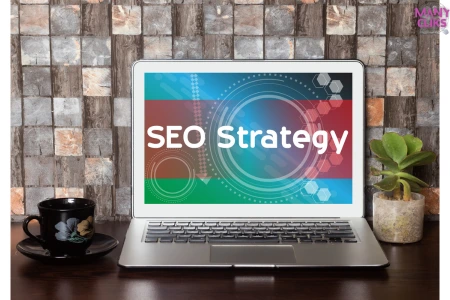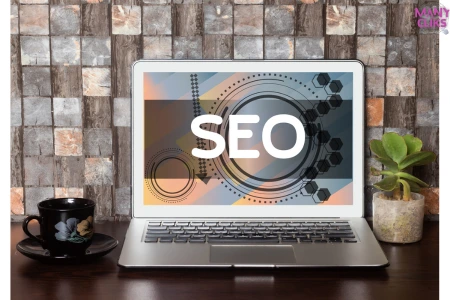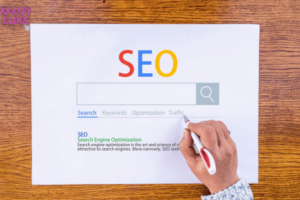
What is on-page SEO? On-page SEO refers to the optimization techniques that you can apply directly on your website to improve its visibility on search engines. These techniques include optimizing your content, meta descriptions, internal and external links, and website structure.
Summary of Content
1: Optimize Your Title Tags
Title tags are crucial for on-page SEO, but why are they so important? They help search engines and users understand the content of your page and can improve your rankings for relevant keywords.
What are some best practices for optimizing your title tags? Use relevant keywords that accurately describe the content of your page and keep your titles under 60 characters. You can also include your brand name or add a unique selling proposition to your title tag to make it stand out.
Can you provide an example of a well-optimized title tag? Let’s say you have a page about healthy recipes for weight loss. A good title tag could be “Healthy Recipes for Weight Loss | Delicious and Nutritious Meals.” This title tag includes relevant keywords, a unique selling proposition, and is under 60 characters.
2: Create High-Quality Content
Why is high-quality content so important for SEO success? High-quality content can help improve your website’s authority and relevance in the eyes of search engines. It can also attract more traffic to your website and provide a better user experience for your audience.
What are some characteristics of high-quality content? High-quality content is unique, informative, and engaging. It provides value to your readers and answers their questions or solves their problems. It also includes relevant keywords and is well-structured with headers, subheaders, and bullet points.
Can you provide an example of high-quality content? Let’s say you have a blog about gardening. A high-quality blog post could be “10 Tips for Growing Tomatoes in Small Spaces.” This post includes unique and informative tips for growing tomatoes, is engaging and easy to read, and provides value to readers who want to grow tomatoes in small spaces.
3: Use Header Tags Properly
Why are header tags important for SEO? Header tags help search engines understand the structure of your content, which can improve your rankings for relevant keywords. They also make your content more readable and easier to navigate for your audience.
How should you use header tags properly? Use H1 tags for your main title and H2 tags for subheadings. Use H3 tags for further subheadings if needed. Make sure your header tags accurately describe the content that follows and include relevant keywords.
Can you provide an example of proper header tag usage? Let’s say you have a blog post about healthy eating habits. Your H1 tag could be “10 Healthy Eating Habits for a Better Life.” Your first subheading could be an H2 tag that says “1. Eat More Fruits and Vegetables.” Your second subheading could be another H2 tag that says “2. Choose Whole Grains Over Refined Grains.”
4: Optimize Your Images
Why is image optimization important for SEO? Image optimization can help improve your website’s loading speed, which is a ranking factor for search engines. It can also help your images appear in image search results and improve your website’s accessibility for visually impaired users.
How can you optimize your images for SEO? Start by compressing your images to reduce their file size without sacrificing quality. Use descriptive file names and alt tags that accurately describe the image and include relevant keywords. Also, make sure to use the appropriate image format (JPEG for photographs, PNG for graphics) and size your images appropriately for their placement on the page.
Can you provide an example of image optimization? Let’s say you have a website about travel. You have a page about a popular tourist destination with several images. To optimize your images, you compress them to reduce their file size, use descriptive file names like “eiffel-tower-paris.jpg,” and include alt tags like “View of the Eiffel Tower in Paris.” You also size your images appropriately for their placement on the page.
5: Improve Your Website’s Loading Speed
Why is website loading speed important for SEO? Website loading speed is a ranking factor for search engines and can also impact user experience. A slow-loading website can lead to high bounce rates and lower engagement, which can hurt your search engine rankings.
How can you improve your website’s loading speed? Start by optimizing your images and minimizing HTTP requests. Use a content delivery network (CDN) to distribute your website’s content across multiple servers, which can improve loading times for users in different geographic locations. Also, consider using a caching plugin to store frequently accessed data and reduce server load.
Can you provide an example of improving website loading speed? Let’s say you have an e-commerce website with many product images. To improve your website’s loading speed, you optimize your images by compressing them and using a CDN to distribute them across multiple servers. You also minimize HTTP requests by combining multiple CSS and JavaScript files into one. Finally, you use a caching plugin to store frequently accessed data and reduce server load.
6: Use Internal and External Links
Why are internal and external links important for SEO? Internal links help search engines understand the structure of your website and can also improve user experience by helping users navigate to relevant content. External links to authoritative websites can improve your website’s credibility and relevance.
How can you use internal and external links for SEO success? Start by linking to relevant pages on your own website using descriptive anchor text. Use external links to relevant, authoritative websites that provide additional context or resources for your readers. Make sure to use a mix of both internal and external links in your content.
Can you provide an example of using internal and external links? Let’s say you have a blog post about the benefits of yoga. You could link to other relevant blog posts on your website about different types of yoga or yoga poses using descriptive anchor text. You could also link to external websites that provide additional resources for your readers, such as a yoga studio’s website or a yoga instructor’s blog.
7: Optimize Your Meta Descriptions
Why are meta descriptions important for SEO? Meta descriptions provide a brief summary of your content in search engine results pages, which can impact click-through rates and user engagement. They also provide an opportunity to incorporate relevant keywords and improve your website’s relevance for search queries.
How can you optimize your meta descriptions for SEO? Start by using relevant keywords in your meta descriptions, but make sure to write for users and not just search engines. Keep your descriptions under 160 characters to ensure they display properly in search engine results pages. Use action-oriented language and highlight the benefits of your content to encourage clicks.
Can you provide an example of optimizing meta descriptions? Let’s say you have a blog post about the benefits of running. To optimize your meta description, you could use relevant keywords like “running benefits” and “cardiovascular health,” and write a description that highlights the benefits of your content, such as “Discover the many benefits of running for your cardiovascular health and overall fitness. Read our expert tips and get started today!”

Conclusion: The 7 Best On-Page SEO Techniques for Website
By implementing these on-page SEO techniques, you can improve your website’s visibility on search engines and attract more traffic to your website. What other on-page SEO techniques have you found to be effective? Share your thoughts in the comments below.
If you’re interested in learning more about on-page SEO techniques and how they can benefit your website, check out our blog at manycliks.com.au. Our team of SEO experts can provide you with the insights and strategies you need to improve your website’s visibility on search engines and attract more traffic to your website. Contact us today to learn more about our services and how we can help you achieve your SEO goals.
Do You Need A Website? How To Kickstart Your Online Business? Are You Facing Any Doubts? Contact Us Today At Contact@Manycliks.Com.Au. Follow Us @Manycliks.



